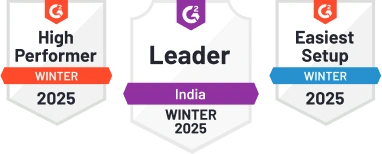Key Responsibility Areas (KRAs) & Key Performance Indicators (KPIs) for Digital Asset Coordinator
1. Digital Asset Management
KRA: Responsible for organizing and maintaining digital assets for efficient retrieval and usage.
Short Description: Manage digital asset library effectively.
- KPI 1: Number of assets cataloged per week.
- KPI 2: Asset retrieval time for internal requests.
- KPI 3: Percentage of outdated assets removed monthly.
- KPI 4: User satisfaction rating on asset organization.
2. Metadata Optimization
KRA: Enhance searchability and accessibility of digital assets through optimized metadata.
Short Description: Improve asset discoverability through metadata.
- KPI 1: Percentage increase in keyword-rich metadata tags.
- KPI 2: Search ranking improvement based on metadata optimization.
- KPI 3: Metadata completion rate for new assets added.
- KPI 4: Number of assets with updated metadata monthly.
3. Quality Control
KRA: Ensure digital assets meet quality standards and brand guidelines.
Short Description: Maintain high-quality standards for all assets.
- KPI 1: Percentage of assets compliant with brand guidelines.
- KPI 2: Number of quality issues reported and resolved monthly.
- KPI 3: User feedback on asset quality and relevance.
- KPI 4: Audit score for asset quality control processes.
4. Asset Usage Analysis
KRA: Analyze the performance and usage of digital assets to inform future strategies.
Short Description: Monitor asset performance and user engagement.
- KPI 1: Number of downloads/views for key assets.
- KPI 2: Conversion rate from assets to desired actions.
- KPI 3: User interaction time with assets on average.
- KPI 4: Insights generated from asset usage data for optimizations.
5. Asset Security
KRA: Implement and maintain security protocols to safeguard digital assets.
Short Description: Ensure secure storage and access to assets.
- KPI 1: Compliance with data protection regulations for assets.
- KPI 2: Number of security breaches or incidents related to assets.
- KPI 3: Regular security audits conducted for digital assets.
- KPI 4: User access permissions monitored and updated regularly.
6. Cross-Functional Collaboration
KRA: Collaborate with various teams to ensure digital assets support organizational goals.
Short Description: Foster teamwork for effective asset utilization.
- KPI 1: Number of successful cross-departmental asset projects.
- KPI 2: Feedback from other teams on asset support and collaboration.
- KPI 3: Timeliness of asset delivery for cross-functional projects.
- KPI 4: Alignment of assets with different team objectives.
7. Continuous Improvement
KRA: Identify opportunities for process enhancement and innovation in digital asset management.
Short Description: Drive continuous improvements in asset workflows.
- KPI 1: Number of implemented process enhancements per quarter.
- KPI 2: Employee suggestions adopted for asset management improvements.
- KPI 3: Time saved through optimized asset management processes.
- KPI 4: Innovation impact on overall asset performance metrics.
8. Training and Development
KRA: Provide training and support to users for effective asset utilization.
Short Description: Empower users with asset management knowledge.
- KPI 1: Number of training sessions conducted on asset management.
- KPI 2: User proficiency improvement post-training programs.
- KPI 3: User feedback on the effectiveness of training materials.
- KPI 4: Increase in self-service asset retrieval by trained users.
9. Vendor Management
KRA: Engage and manage relationships with external vendors for digital asset services.
Short Description: Oversee vendor partnerships for asset needs.
- KPI 1: Vendor performance evaluations based on set criteria.
- KPI 2: Timeliness and quality of deliverables from vendors.
- KPI 3: Cost savings achieved through vendor negotiations and contracts.
- KPI 4: Vendor satisfaction surveys and feedback analysis.
10. Reporting and Insights
KRA: Generate reports and actionable insights from asset data for decision-making.
Short Description: Provide data-driven insights for strategic asset planning.
- KPI 1: Accuracy and timeliness of asset performance reports.
- KPI 2: Insights impact on decision-making processes.
- KPI 3: Data visualization effectiveness in conveying asset trends.
- KPI 4: Number of strategic recommendations implemented based on insights.







